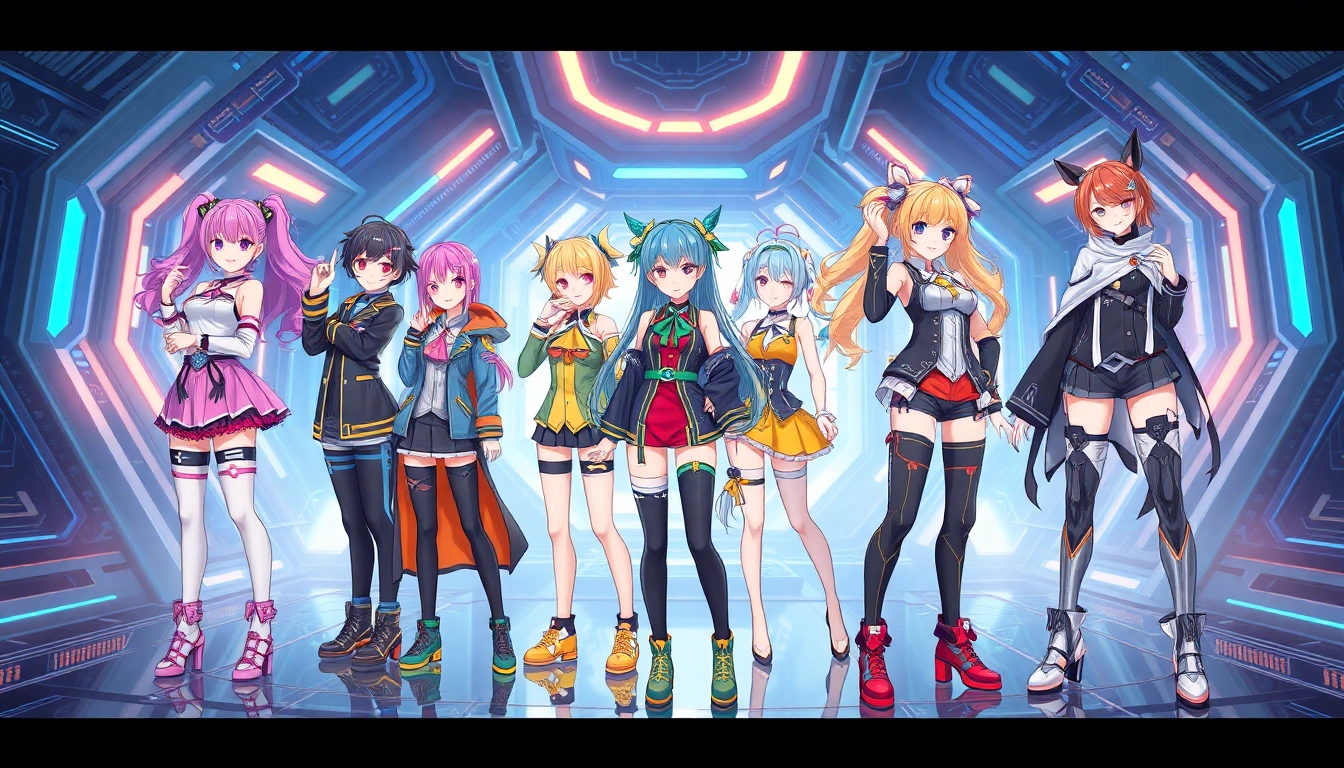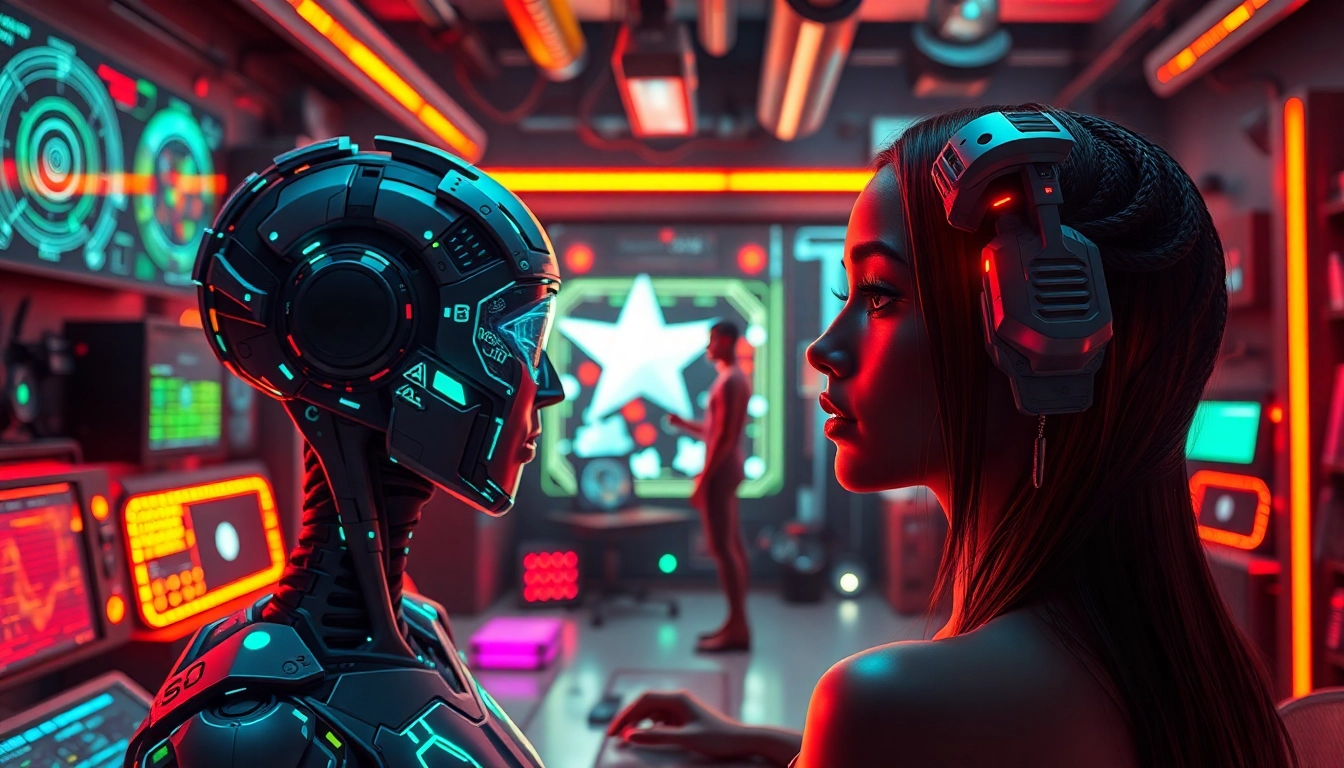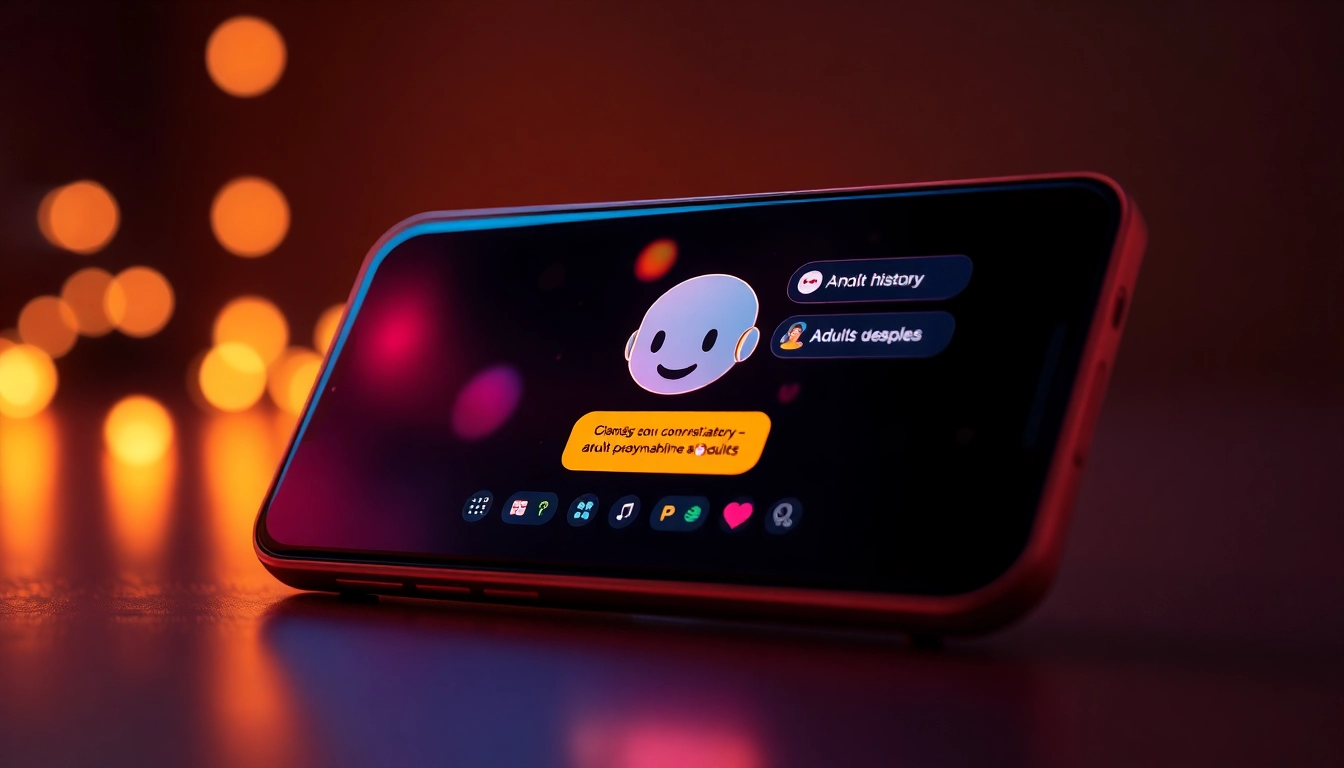Revolutionizing Visual Creativity: How Nano Banana AI Is Transforming Image Editing
In the rapidly evolving world of artificial intelligence and digital imaging, a new player has emerged, promising to redefine the boundaries of what’s possible in image editing. Enter google nano banana, an AI platform that claims to outshine all existing tools by leveraging advanced reasoning capabilities, deep contextual understanding, and unparalleled consistency. Unlike traditional image editors that perform basic manipulations, Nano Banana AI positions itself as a paradigm shift—an intelligent, logical, and context-aware system that can truly comprehend what users want to achieve and why. This article delves into the core features, technological innovations, competitive advantages, and future implications of Nano Banana AI, illustrating why it is poised to become the gold standard in AI-driven visual creativity.
Understanding the Landscape of AI Image Editing Tools
Traditional Tools and Their Limitations
The digital art and content creation industries have long relied on tools like Adobe Photoshop, GIMP, and more recently, AI-powered platforms such as Flux Kontext and Gemini 2.0 Flash. These tools, while powerful, primarily focus on surface-level manipulations—adjusting colors, cropping, applying filters, or performing straightforward edits. Although they incorporate basic automation and some AI features, their core capabilities are limited to pattern recognition, pixel-level adjustments, and simple transformations.
While these tools have served creators well, they often fall short when faced with complex editing tasks that require understanding the semantics of an image or maintaining consistency across multiple edits. For instance, changing a person’s background while preserving their facial features or adjusting the angle of an object without distortion remains a challenge. This gap has driven users to seek more intelligent solutions that can intuitively interpret their intentions.
The Rise of AI-Driven Image Editing Platforms
Recent advancements have introduced AI models that promise more sophisticated edits. Platforms like Gemini 2.5 Flash Image from Google and others have claimed to improve the quality and consistency of edits by utilizing deep learning techniques. However, despite these improvements, most models still lack true contextual reasoning, often producing results that look plausible but lack semantic coherence or logical flow.
This is where Nano Banana AI distinguishes itself. By claiming to integrate advanced reasoning capabilities, it aims to transcend the limitations of conventional AI image editors, offering a tool that not only edits but understands images at a conceptual level—delivering results that align more closely with user intent and real-world logic.
What Makes Nano Banana AI Revolutionary?
Deep Contextual Understanding and Logical Reasoning
Unlike typical AI photo editors that rely heavily on pattern recognition and superficial modifications, Nano Banana AI employs deep reasoning algorithms. This allows the system to interpret the context of an image—identifying objects, understanding spatial relationships, and grasping the nuanced intent behind user requests.
For example, if a user asks to replace a background while keeping the subject’s perspective and lighting consistent, Nano Banana AI doesn’t just perform a cut-and-paste operation. Instead, it comprehends the scene’s depth, shadows, and optical flow, ensuring that the edited image remains coherent and realistic. This capability stems from its sophisticated reasoning engine, which simulates human-like understanding, enabling it to make complex decisions during editing.
3D Spatial Awareness and Visual Consistency
One of Nano Banana AI’s standout features is its three-dimensional spatial awareness. Traditional 2D editing tools struggle with maintaining perspective when altering images—distorting objects, misaligning backgrounds, or losing depth cues. Nano Banana AI integrates 3D modeling principles to preserve spatial relationships, ensuring that edits are visually accurate from different angles and perspectives.
This spatial intelligence allows for seamless modifications such as changing the viewpoint, adjusting object positions, or manipulating lighting conditions—all while keeping the image believable and consistent. It’s akin to having a virtual photographer or 3D artist embedded within the AI system, capable of understanding and manipulating the scene in a lifelike manner.
Unmatched Accuracy and Consistency
Google’s own claims suggest Nano Banana AI achieves an astonishing 95-99% accuracy in editing tasks, a significant leap over competitors that typically hover around 20-70%. This high accuracy translates into fewer manual corrections, faster workflows, and more reliable outcomes, especially for complex edits involving multiple elements or detailed features.
The system’s ability to remember and preserve intricate details—such as facial features, textures, and contextual cues—ensures that output images are not only aesthetically pleasing but also logically consistent. This level of precision is crucial for professional applications like advertising, film post-production, and digital art, where quality and coherence are paramount.
Comparative Analysis: Nano Banana AI vs. Competitors
Flux Kontext and Gemini 2.0 Flash
Flux Kontext and Gemini 2.0 Flash are among the notable AI image editors currently in use. They incorporate basic AI features such as auto-color correction, background removal, and simple object insertion. However, their core limitations lie in their superficial understanding—they often produce inconsistent results when handling complex edits or when multiple adjustments are required.
In contrast, Nano Banana AI’s deep reasoning and contextual comprehension enable it to outperform these tools significantly. While Flux Kontext may struggle with maintaining facial recognition or consistent lighting across edits, Nano Banana AI can preserve these details flawlessly, even after multiple transformations.
Performance Metrics and User Experience
Quantitative metrics underline Nano Banana AI’s superiority. Industry insiders estimate its accuracy rate at 95-99%, compared to 20-70% for other AI editors. This statistical advantage reflects in user satisfaction, reduced editing times, and higher fidelity in the final images.
For users, this means fewer iterations, less manual correction, and more confidence in the AI’s output. The platform’s intuitive interface further enhances accessibility, allowing both casual creators and professional studios to leverage its capabilities without steep learning curves.
The Technological Edge: How Nano Banana AI Achieves Its Breakthroughs
Advanced Reasoning Algorithms
At the heart of Nano Banana AI lies a suite of advanced algorithms that mimic human logical processes. These algorithms analyze not just pixel data but interpret semantic content—recognizing objects, understanding scene composition, and predicting plausible modifications. This reasoning engine allows the AI to make informed decisions during edits, ensuring that each change aligns with the overall image context.
Deep Learning and Neural Network Architecture
Nano Banana AI utilizes state-of-the-art neural networks trained on vast datasets covering diverse scenes, objects, and styles. Its architecture emphasizes deep contextual embeddings, enabling it to grasp subtle nuances such as facial expressions, environmental lighting, and spatial relationships. Continuous learning and feedback loops further refine its capabilities, making it more accurate over time.
3D Spatial Modeling
Incorporating 3D modeling techniques, the platform constructs a virtual spatial understanding of each scene. This modeling allows for perspective-aware edits, realistic object placement, and lighting adjustments that respect the scene’s depth cues. Such spatial intelligence significantly elevates the realism of generated or modified images.
Consistency Across Edits
Nano Banana AI’s design emphasizes maintaining coherence across multiple edits. Whether changing backgrounds, adjusting angles, or modifying objects, it remembers prior details—ensuring continuity that other tools cannot match. This persistent memory capability is crucial for complex projects requiring multiple iterative changes.
Target Audience and Use Cases
Casual Creators and Hobbyists
For amateur photographers, social media influencers, and content hobbyists, Nano Banana AI offers an accessible yet powerful toolset. Its intuitive interface and intelligent features allow users to create professional-grade images without extensive technical knowledge. Simple tasks like background swapping, color correction, or object removal become effortless, elevating personal projects and social media content.
Professional Photographers and Designers
Professionals demand precision and reliability. Nano Banana AI’s high accuracy, detailed reasoning, and spatial awareness make it an invaluable asset in commercial photography, advertising, and digital art. It streamlines workflows, reduces manual corrections, and ensures that creative visions are realized with fidelity.
Enterprises and Large-Scale Studios
Large organizations and studios benefit from the platform’s scalability and enterprise features. Custom integrations, bulk processing, and advanced security protocols cater to high-volume production environments. The platform’s ability to maintain consistency across extensive projects streamlines operations and enhances output quality.
The Future of AI in Visual Arts: Ethical Considerations and Potential Developments
Ethical Implications
As AI-driven image editing becomes more sophisticated, ethical questions arise around authenticity, deepfakes, and misinformation. Nano Banana AI’s capabilities to produce highly realistic images necessitate responsible usage policies, watermarking, and transparency measures to prevent misuse.
Potential Developments and Innovations
Looking ahead, Nano Banana AI is poised to incorporate augmented reality , virtual reality , and real-time editing features. Its reasoning engine might evolve to facilitate interactive editing experiences, enabling artists to manipulate scenes dynamically. Additionally, integration with other AI modalities like audio or 3D modeling could open new creative horizons.
How Nano Banana AI Is Setting a New Paradigm in AI-Driven Creativity
The core innovation of Nano Banana AI lies in its shift from superficial editing to deep understanding. It embodies the principle that true AI advancement isn’t merely about generating attractive images but about creating systems that can think about images as humans do—comprehending context, maintaining logical consistency, and reasoning through complex transformations. This approach elevates AI from a mere tool to a creative partner capable of collaborating with humans in unprecedented ways.
Redefining Artistic Boundaries
By enabling more nuanced, context-aware edits, Nano Banana AI empowers artists to push creative limits. It facilitates realistic scene reconstruction, complex compositing, and imaginative alterations that were previously labor-intensive or impossible.
Transforming Industry Standards
From advertising to entertainment, industries adopting Nano Banana AI will experience faster production cycles, higher quality outputs, and new creative possibilities. Its ability to maintain semantic coherence across edits sets a new standard for what AI-driven image manipulation can achieve.
Practical Tips for Users to Maximize Nano Banana AI’s Potential
Understanding User Intent
To leverage Nano Banana AI effectively, users should clearly articulate their desired outcomes. Precise prompts and contextual cues help the AI interpret complex requests accurately, resulting in better edits.
Utilizing Spatial Awareness Features
Experiment with perspective and object placement features that utilize the platform’s 3D modeling capabilities. These tools allow for more realistic and coherent scene modifications, especially when altering viewpoints or adjusting lighting.
Iterative Refinement
While Nano Banana AI boasts high accuracy, iterative editing still enhances results. Users should review initial outputs and provide feedback or adjustments to guide the AI towards optimal outcomes.
Integrating with Creative Workflows
Combine Nano Banana AI with traditional editing tools for post-processing. Its outputs can serve as high-quality starting points, which can then be fine-tuned in software like Photoshop or Illustrator, achieving professional-grade results efficiently.
Conclusion: The Paradigm Shift in AI Image Editing
The advent of nano banana ai signifies more than just a new tool—it represents a fundamental shift in how artificial intelligence approaches visual creativity. By integrating advanced reasoning, deep contextual understanding, and 3D spatial awareness, Nano Banana AI transcends conventional limitations, delivering images that are not only aesthetically compelling but also logically coherent and contextually accurate.
This platform’s potential to redefine industry standards, empower creators across all levels, and inspire future innovations makes it a true paradigm shift. As AI continues to evolve, systems like Nano Banana AI will play a crucial role in shaping a future where machines understand images as deeply as humans do—opening doors to limitless creative possibilities and transforming the landscape of digital art and visual communication for years to come.
In summary, Nano Banana AI stands at the forefront of AI-driven visual innovation, setting new benchmarks for accuracy, consistency, and intelligent understanding in image editing. As the technology matures and adoption broadens, it promises to revolutionize the way we create, manipulate, and perceive images—ushering in a new era of digital artistry infused with machine intelligence that truly “thinks” about images the way humans do.



